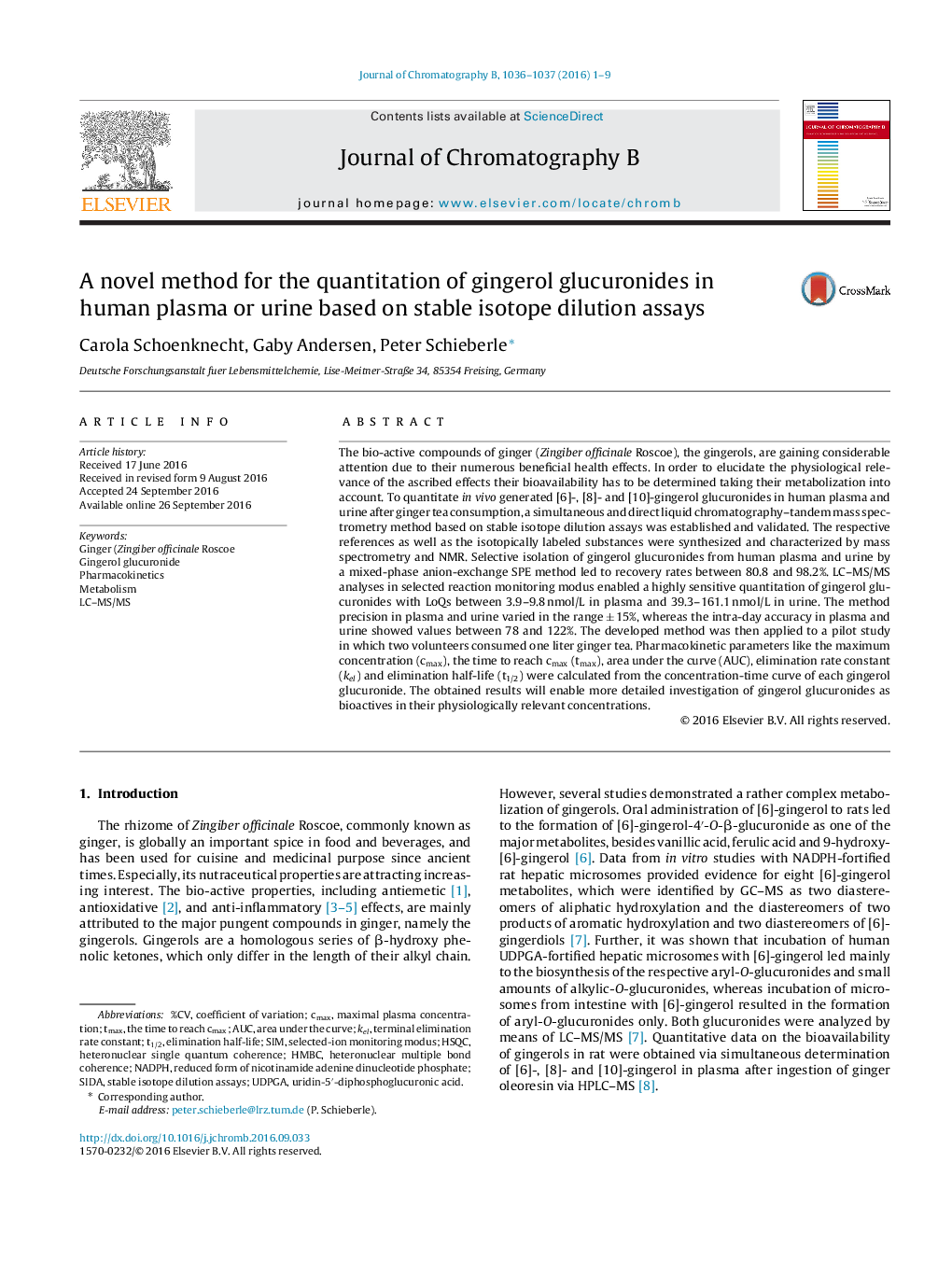| Article ID | Journal | Published Year | Pages | File Type |
|---|---|---|---|---|
| 5136699 | Journal of Chromatography B | 2016 | 9 Pages |
â¢A synthesis route for unlabeled and [2H4]-labeled gingerol glucuronides is proposed.â¢This is the first report of a direct quantitation method for gingerol glucuronides.â¢SIDAs for the simultaneous determination of gingerol glucuronide in plasma and urine were established and validated.â¢A bioavailability study in humans demonstrated the suitability of the method.
The bio-active compounds of ginger (Zingiber officinale Roscoe), the gingerols, are gaining considerable attention due to their numerous beneficial health effects. In order to elucidate the physiological relevance of the ascribed effects their bioavailability has to be determined taking their metabolization into account. To quantitate in vivo generated [6]-, [8]- and [10]-gingerol glucuronides in human plasma and urine after ginger tea consumption, a simultaneous and direct liquid chromatography-tandem mass spectrometry method based on stable isotope dilution assays was established and validated. The respective references as well as the isotopically labeled substances were synthesized and characterized by mass spectrometry and NMR. Selective isolation of gingerol glucuronides from human plasma and urine by a mixed-phase anion-exchange SPE method led to recovery rates between 80.8 and 98.2%. LC-MS/MS analyses in selected reaction monitoring modus enabled a highly sensitive quantitation of gingerol glucuronides with LoQs between 3.9-9.8 nmol/L in plasma and 39.3-161.1 nmol/L in urine. The method precision in plasma and urine varied in the range ± 15%, whereas the intra-day accuracy in plasma and urine showed values between 78 and 122%. The developed method was then applied to a pilot study in which two volunteers consumed one liter ginger tea. Pharmacokinetic parameters like the maximum concentration (cmax), the time to reach cmax (tmax), area under the curve (AUC), elimination rate constant (kel) and elimination half-life (t1/2) were calculated from the concentration-time curve of each gingerol glucuronide. The obtained results will enable more detailed investigation of gingerol glucuronides as bioactives in their physiologically relevant concentrations.
